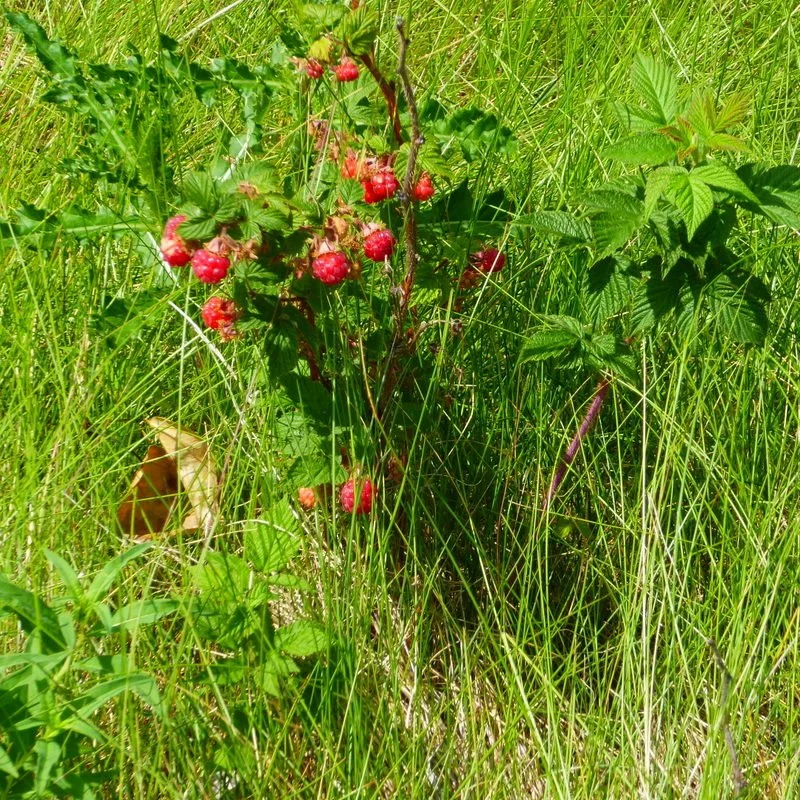What are the Bears eating today?
by Derek Ryder, Wildlife Ambassador & IGA Interpretive Guide
Welcome to berry season! When it comes to berries, of course we endlessly talk of shepherdia, and that’s an absolutely prime source of berries for bears. There are places in K-Country where there are a LOT fewer shepherdia bushes, or where the berry crop just isn’t as good. If you’re a bear living in that space, what berries do you eat? Well, one berry you DON’T eat are strawberries. Why? We know strawberries are delicious and sweet. Why do bears NOT eat strawberries?
The simple answer is “density”. Anyone who has walked through an alpine meadow can find lots of strawberry plants, but there just aren’t a lot of berries. Bears are eating 200,000 shepherdia berries a day to get the calories they need at this time of year. Anyone who has gone wild strawberry hunting knows Mr. Bear would basically have to lick square miles of ground to find that many strawberries – and he still probably wouldn’t get that many. So while strawberries are tasty, bears just don’t bother, since they’re too much work for too little reward.
But raspberries… ooh, wild raspberries (rubus idaeus)… now THERE’S a berry bears love. Members of the rose family, and very prickly, but the bears don’t care about the prickles; their lips and tongues are tougher than ours. Raspberries tend to grow in patches of a dozen or more plants. With raspberries, year-old, yellower-leafed canes are FAR more productive for berries than new green canes. Each year-old, berry-bearing plant can have a hundred or more berries. This means that a patch could contain 5-10 kg of berries if you got them all. More nutritionally dense than shepherdia, bears don’t have to eat as many raspberries, but their needs are still on the order of 30-40 kg of raspberries a day (and the more the merrier). Find 8-10 patches a day, and bears are happy – and 10 patches are easy to find in the right areas.
Research done in the mid 1980’s in the Sheep River area by loyal WildSmart weekly bear report reader Anne Weerstra (by collecting scat and analyzing it… fun job) showed that wild raspberries form a significant part of the diet for the black bears in the area she studied. Raspberries in 1984 at this time of year were in almost 40% of bear scat; shepherdia was only in about 30%. In 1985, raspberries had ballooned to almost 55%; shepherdia was below 10%; the data suggests that wasn’t a great shepherdia year. You can read her paper on it here. I want to thank Anne for passing on suggestions for these articles, too.
Wild raspberries like disturbed ground and gravelly soils, so (just like dandelions) often grow along roadsides and where people are. Locally, the raspberry patches near my house are dined on annually, as are the ones I know of in the Heart Creek area. Raspberry patches also surround Quarry Lake (where the raspberry pictures accompanying this article were taken) and on the power line, which often creates conflict issues when the bears move in to get them (and they do most years). But you will also find wild raspberries in stony meadows at higher elevations, and the grizzlies are good at finding them, too.
They verge on invasive; one volunteer raspberry plant got into my garden a few years back, and despite my best efforts to control it, I am now fighting 5 plants. They propagate not only by seed but by suckering, putting underground root shoots out meters from the original plants. On the bright side, I’m good at collecting the berries I do get (they’re delicious), and most berries don’t show up until Year 2, giving me lots of time to control the attractant.
While people have been eating (and cultivating) raspberries for a long time, the leaves are also of interest. If the leaves are fresh and green, they can be made into a tea, but avoid using wilted leaves as they can be toxic. Some sources purport that raspberry leaves contain compounds (including “fragarine,” identified and named in 1941) that have stimulating effects on the muscles of the uterus, so raspberry teas have been commonly used for centuries before, during or after childbirth. Its real efficacy remains unproven, however.
Click here to find out ‘What the bears are eating’ in other months!

